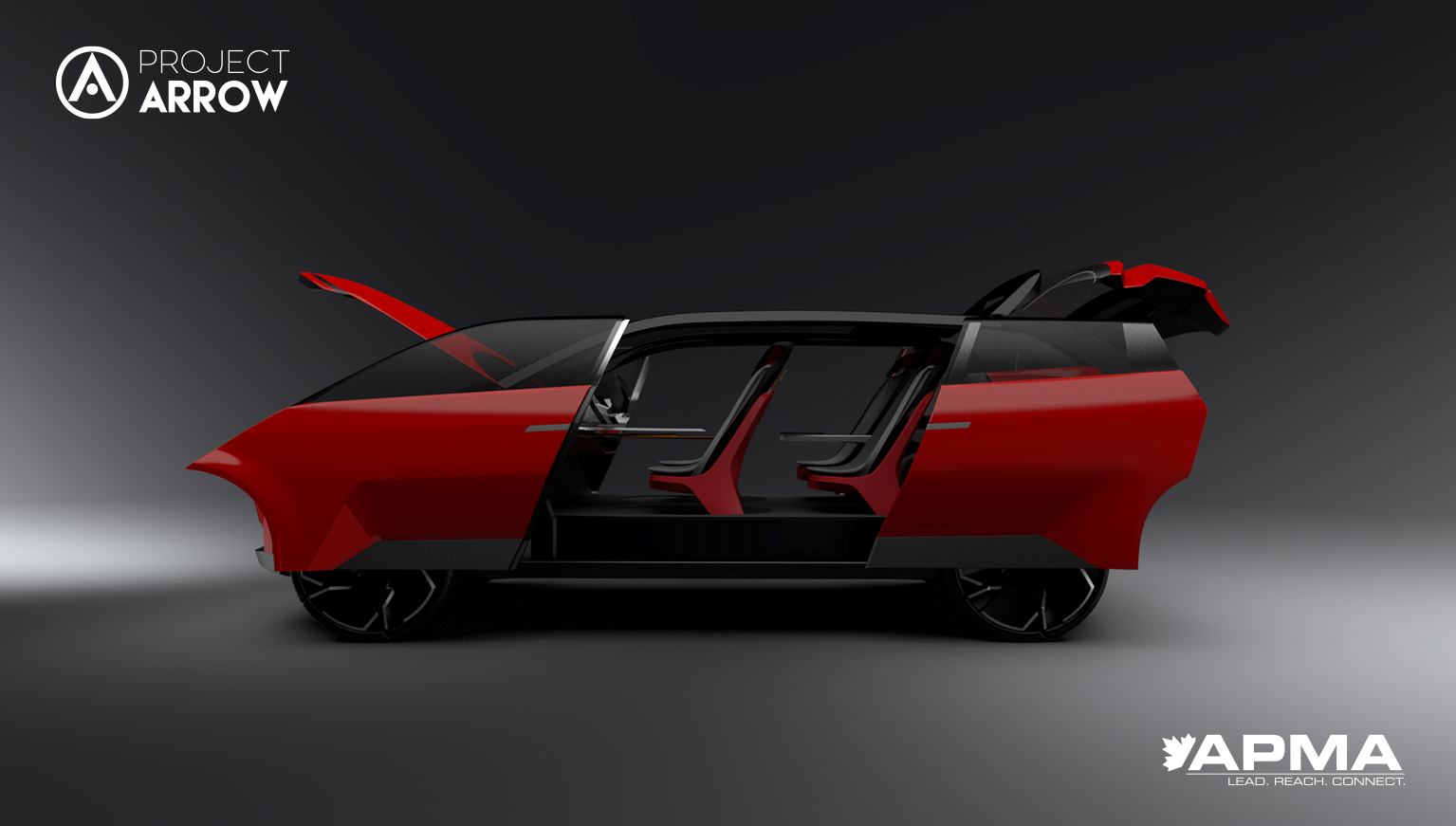Today, the Canadian government announced a $5 million investment in the Automotive Parts Manufacturers’ Association (APMA) to support Project Arrow, the automotive industry’s first Canadian-made, zero-emission concept vehicle.
Project Arrow is the collective effort of industry partners and University students working together to design, engineer, and build a connected and autonomous zero-emissions vehicle concept car.
[embedded content]
A digital twin is an immersive and active virtual reality environment that is used to test and validate connected and autonomous technologies before they are integrated into the physical car. A twin of the car has ben created at the catchily named Invest WindsorEssex, home to a Virtual Reality(VR) CAVE.
The concept car will not get a commercial release. Rather, it’s part of Canada’s commitment to a zero-emissions future by 2050. However, it’s an opportunity to showcase the capabilities of the Canadian automobility and digital technology sectors globally and to create a robust electric vehicle supply chain in Canada, increasing Canada’s domestic electric vehicle market.
A zero-emissions car designed by students


The project is a great opportunity to create and test new designs and technology. Project Arrow invited university students to submit car design entries. A team of four students from Carleton University’s School of Industrial Design in Ottawa, Ontario, were the winners. They completed their design as a side-project in just 12 weeks during the COVID-19 pandemic. It’s unclear whether they received a cash prize. However, it’s a great example of design competitions as a means to build experience and industry connections.
Project Arrow put a call out for suppliers at CES 2021. They are using an AI-enabled technology developed by YQGTech to shift through 300 supplies to match connect proposed parts, systems, and components with those needed to build the car.


The project aims to release and tour the concept car in 2022.